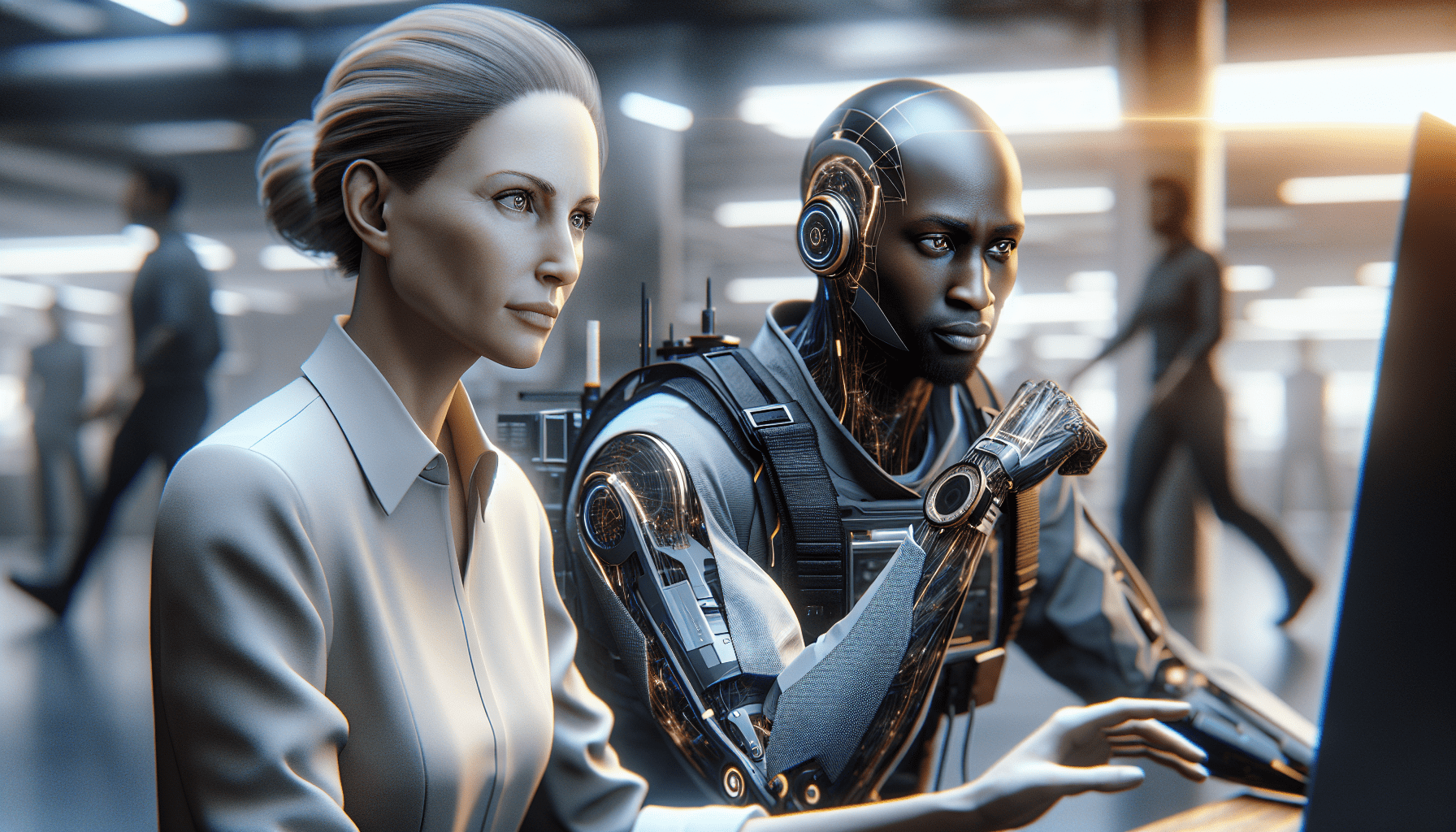In the fast-paced world of video game development, staying ahead of the curve is crucial. One of the most pressing challenges is ensuring that games are free of bugs and glitches. This is where AI bug detection algorithms come into play, offering a cutting-edge solution to a persistent problem.
Understanding AI-Driven Bug Detection
Key Points
- AI bug detection algorithms can identify and diagnose software bugs more quickly and accurately than traditional methods.
- These algorithms use machine learning to recognize patterns and anomalies in code.
- AI-driven tools can provide root cause analysis, helping developers fix bugs efficiently.
- Automated bug detection reduces the need for manual testing, saving time and resources.
- Implementing AI in bug detection can lead to higher-quality software and improved user satisfaction.
What is AI-Driven Bug Detection?
AI-driven bug detection refers to the use of artificial intelligence and machine learning algorithms to identify and diagnose errors in software code. These algorithms analyze vast amounts of data to detect patterns and anomalies that may indicate the presence of bugs. By leveraging AI, developers can find and fix bugs more efficiently, leading to more stable and reliable software.
Traditional bug detection methods often rely on manual testing and static code analysis, which can be time-consuming and prone to human error. AI-driven approaches, on the other hand, can automate much of this process, providing faster and more accurate results. This is particularly valuable in the video game development industry, where timely bug fixes are essential to maintaining a positive user experience.
AI-driven bug detection tools can also offer root cause analysis, helping developers understand the underlying issues that lead to bugs. This allows for more effective and targeted fixes, reducing the likelihood of recurring problems. Overall, AI-driven bug detection represents a significant advancement in software quality assurance.
How AI Bug Detection Works
AI bug detection algorithms typically use machine learning techniques to analyze code and identify potential issues. One common approach is anomaly detection, where the AI system learns to recognize normal behavior patterns in the software and flags any deviations as potential bugs. Another approach is predictive analytics, where the AI system uses historical data to predict future errors and bugs.
These algorithms can be trained on large datasets of code, allowing them to learn from past mistakes and improve their accuracy over time. Once trained, the AI system can scan new code for potential issues, providing real-time feedback to developers. This can significantly speed up the bug detection process and reduce the time spent on manual testing.
In addition to identifying bugs, AI-driven tools can also provide root cause analysis by examining logs and error messages to determine the source of a problem. This helps developers quickly pinpoint the underlying issue and implement a fix, improving the overall quality of the software.
The Challenge of Bug Detection in Game Development

Complexity of Modern Games
Modern video games are incredibly complex, with millions of lines of code and numerous interconnected systems. This complexity makes it challenging to identify and fix bugs, as even a small error in one part of the code can have far-reaching consequences. Traditional bug detection methods often struggle to keep up with the scale and complexity of modern games, leading to longer development times and higher costs.
As games become more sophisticated, the potential for bugs and glitches increases. Developers must constantly test and debug their code to ensure a smooth and enjoyable user experience. However, manual testing can be time-consuming and labor-intensive, making it difficult to keep up with the demands of modern game development.
Time Constraints
Time constraints are another significant challenge in the video game development industry. Developers often work under tight deadlines to release their games on schedule, leaving little time for thorough testing and bug fixing. This can result in games being released with unresolved bugs, leading to negative reviews and user dissatisfaction.
In such a fast-paced environment, developers need efficient and reliable tools to help them identify and fix bugs quickly. AI-driven bug detection algorithms can provide a valuable solution, automating much of the testing process and allowing developers to focus on other critical tasks.
Resource Limitations
Resource limitations are a common issue for small to medium-sized game development studios. These studios often lack the budget and manpower to conduct extensive manual testing, making it difficult to ensure the quality of their games. AI-driven bug detection tools can help level the playing field by providing an affordable and efficient solution for identifying and fixing bugs.
By automating the bug detection process, AI-driven tools can reduce the need for manual testing and free up valuable resources for other aspects of game development. This can help smaller studios compete with larger companies and deliver high-quality games to their users.
Implementing AI-Driven Bug Detection
Step One: Integrate AI Tools
Integrating AI tools into your development workflow is the first step in implementing AI-driven bug detection. There are several AI-driven bug detection tools available, such as Railtown.ai, which can be easily integrated into your existing development environment. These tools typically offer one-click integration with popular ticketing systems, making it easy to get started.
Once integrated, the AI tool will begin analyzing your code and providing real-time feedback on potential issues. This can help you identify and fix bugs early in the development process, reducing the risk of major issues later on.
Step Two: Train the AI System
Training the AI system is a crucial step in ensuring its accuracy and effectiveness. Most AI-driven bug detection tools use machine learning algorithms that need to be trained on large datasets of code. This training process allows the AI system to learn from past mistakes and improve its ability to identify and diagnose bugs.
To train the AI system, you will need to provide it with a dataset of code that includes both examples of bugs and correctly functioning code. The AI system will analyze this data and use it to develop a model for identifying potential issues in new code. This training process can take some time, but it is essential for ensuring the accuracy and reliability of the AI-driven bug detection tool.
Step Three: Monitor and Adjust
Monitoring and adjusting the AI system is an ongoing process that ensures its continued effectiveness. As you use the AI-driven bug detection tool, you may need to make adjustments to its settings and parameters to improve its accuracy and performance. This can involve fine-tuning the machine learning algorithms, updating the training dataset, or adjusting the thresholds for flagging potential issues.
Regular monitoring and adjustment will help you get the most out of your AI-driven bug detection tool and ensure that it continues to provide accurate and reliable results. By staying proactive and making necessary adjustments, you can maintain the quality and stability of your software over time.
FAQs
What are the benefits of AI-driven bug detection?
AI-driven bug detection offers several benefits, including faster and more accurate identification of bugs, reduced need for manual testing, and improved root cause analysis. These tools can help developers save time and resources while ensuring the quality and reliability of their software.
How does AI-driven bug detection work?
AI-driven bug detection uses machine learning algorithms to analyze code and identify potential issues. These algorithms can detect patterns and anomalies that may indicate the presence of bugs, providing real-time feedback to developers. The AI system can also offer root cause analysis to help developers understand and fix the underlying issues.
Can AI-driven bug detection be used in all types of software development?
AI-driven bug detection can be used in various types of software development, including video game development, web development, and mobile app development. These tools are versatile and can be integrated into different development environments to help identify and fix bugs more efficiently.
Are there any limitations to AI-driven bug detection?
AI-driven bug detection has some limitations, such as the need for a large dataset to train the machine learning algorithms and the potential for false positives or false negatives. However, with regular monitoring and adjustment, these limitations can be minimized, and the benefits of AI-driven bug detection can be maximized.
Future of AI-Driven Bug Detection
The future of AI-driven bug detection looks promising, with several trends and advancements on the horizon. Here are five predictions for the future of this technology:
- Increased Adoption: More game development studios will adopt AI-driven bug detection tools as they become more accessible and affordable.
- Improved Accuracy: Advances in machine learning algorithms will lead to even more accurate and reliable bug detection.
- Integration with Other Tools: AI-driven bug detection tools will become more integrated with other development tools, creating a seamless workflow for developers.
- Real-Time Collaboration: AI-driven tools will enable real-time collaboration between developers, allowing for faster identification and resolution of bugs.
- Enhanced User Experience: As AI-driven bug detection improves, the overall quality and stability of software will increase, leading to a better user experience.
More Information
- FREE AI Bug Detector: Detect Bug in Code Online in Any Language – A tool for detecting bugs in code using AI.
- How AI Can Detect Software Bugs and Root Cause Analysis – An article on how AI can help detect software bugs and provide root cause analysis.
Disclaimer
This is an AI-generated article with educative purposes and doesn’t intend to give advice or recommend its implementation. The goal is to inspire readers to research and delve deeper into the topics covered in the article.
- The Agentic Startup Manifesto - June 8, 2025
- Remote Hiring in 2025 - April 5, 2025
- Burnout in Remote Teams: How It’s Draining Your Profits - January 27, 2025
